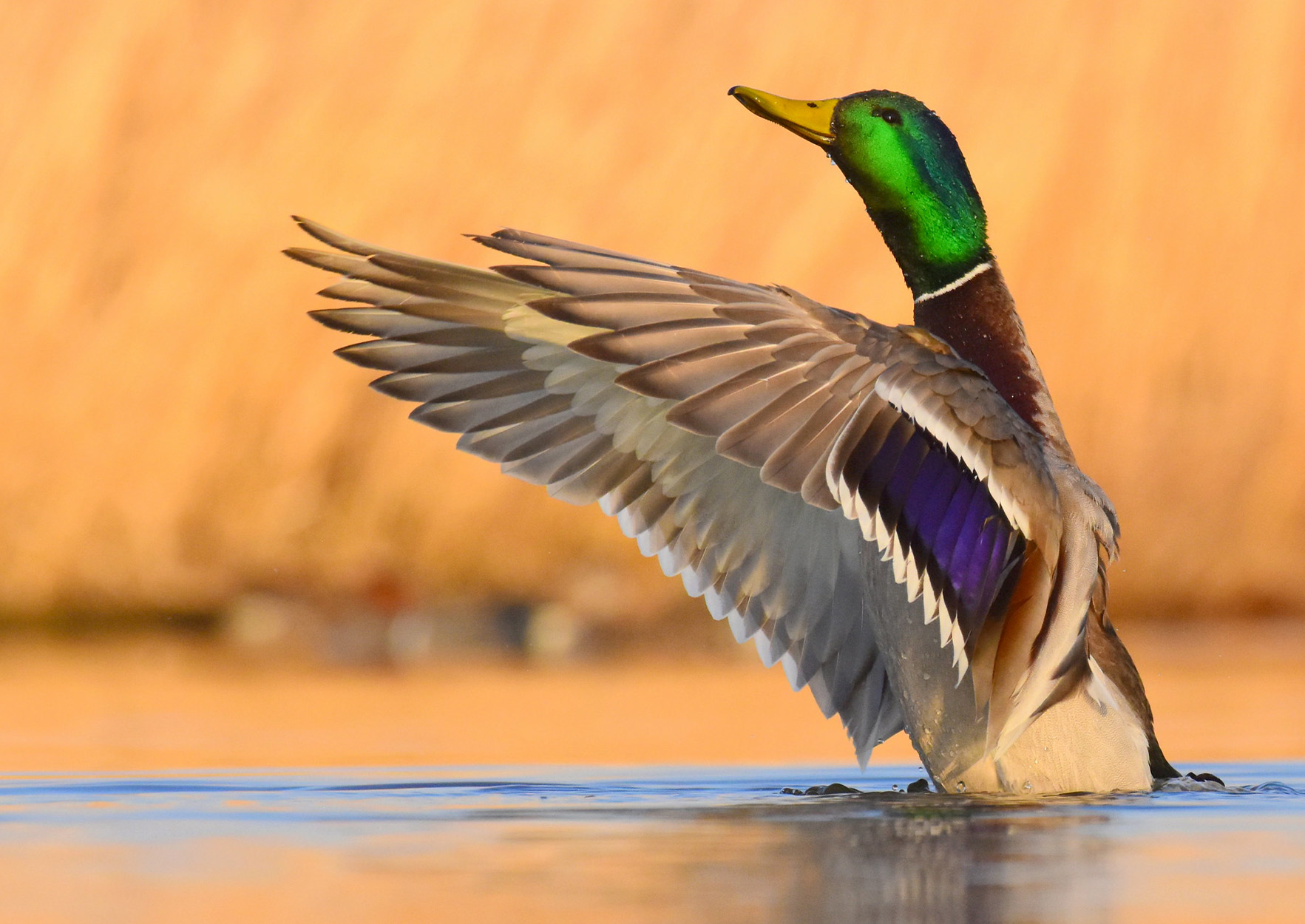8 Sneaky Reasons You Keep Losing Big Fish

So much can go wrong on the water, and even the smallest missteps can cost you a trophy fish. Your personal-best snook can run under a dock and break you off. That 7-pound largemouth can throw your frog in one head-shaking jump. The brown trout of a lifetime that just sipped your fly can shoot down a riffle and bust that delicate 6-pound tippet.
The common denominator is these scenarios, however, is that they are largely out of our control. However, there a ton of other small factors that we can control, but often overlook.
You can spend years on the water without losing a fish to any of the mistakes I’ll highlight below, but sooner or later neglect of your gear or just general laziness will get you. Don’t let it. If you adopt these practices and avoid the following mistakes, you’ll be several steps ahead of that wily snook gunning for those dock pilings.
You’re Using Dull Hooks
Let’s just get this one out of the way first, because it’s one of the main reasons anglers lose fish and one of the most avoidable even though many people pay it no mind. Do you carry a file to sharpen your hooks? If you’re a muskie angler or offshore fisherman, I bet you do. But if you’re a casual angler fishing for everything from bass to trout to cats and panfish, I bet you don’t. It’s such a mistake, because I’d argue that the more technologically advanced our hooks become, the more easily they dull.
Step back a few decades and hooks were predominantly made of bronze or steel. They were mechanically sharpened at the factory and though they were plenty pointy enough to penetrate a fish’s mouth, they pale in comparison to modern hooks. These days, premium hooks are made from a variety of composite metals and are sometimes sharpened with chemicals or lasers. The result is a hook with a point finer than a hypodermic needle. And, oh yeah, they poke through a bass lip like a hot knife through cold butter. However, the finer the point the more easily it will roll, break, or dull if it contacts wood, stone, or simply lodges in a hard part of a fish’s jaw.
Hook files are very inexpensive, and it takes about three seconds to “unroll” a point that curled over. You might think such a minor defect wouldn’t matter given that you swing like Babe Ruth when you set, but trust me, it’ll cost you eventually.
You Don’t Inspect Your Braid for Damage Often
Though there are plenty of anglers who still prefer the stretch of old-school monofilament, it’s fair to say that braided fishing line has become more of the norm these days across all fishing categories. And why wouldn’t it? Braid’s lack of stretch helps you feel bites faster and plant hooks more firmly. Its thinner diameter means you can load a smaller reel with 20-pound test and maintain optimal line capacity. But for all the benefits of braid, it does have an Achilles heel that will bite fishermen sooner or later.
Braided lines are created by weaving incredibly thin strands of high strength material together, whereas monofilament is a single strand created via an extrusion process. In a head-to-head battle of breaking strength, 20-pound braid will beat 20-pound monofilament every time. Unless, however, not all the strands that make up the braid are intact. The reality is that single-strand monofilament is more resistant to abrasion than braided line, but that perk alone doesn’t outweigh the many perks of braid. Therefore, checking your braid for nicks or weak spots often is critical.
Damage to your braid is most likely to occur in the first 10 to 20 feet coming off the reel. Look for frays or spots where the line color is lighter than the rest. Even micro abrasion can cause the line to snap under surprisingly little pressure. If you want to go all in, check your braid after ever fish you catch. At least do it after any snag, after your rod falls over while it’s leaning against the truck, or if the line contacts anything rough on or off the water. I recently made the mistake of not checking after my rods hit some branches while kayaking. It cost me the next snakehead that ate my frog.
You Don’t Check Your Guides for Chips
Have you ever been fighting a fish and your line suddenly parts close to the rod? Or maybe you’re retrieving a heavier rig or lure and for seemingly no reason, you stop feeling weight because your line’s been cut? Most of the time, the culprit is a chipped or pitted guide on your rod, and if you discover this on the water (which is likely) there’s not a lot you can do to fix the issue.
The worst version of this happened to me about 10 years ago. I hiked two miles over soft sand at midnight to catch the right striper tide at a back bay spot in New Jersey. On the very first cast it was as though my plug evaporated into thin air. I chalked it up to a weak spot in the braid and retied. Then it happened again. I soon figured out that the insert of my tip guide had chipped, creating a divot so sharp it was slicing 30-pound braid. I walked two miles out and went home.
Chips can easily occur in any ceramic or plastic guide inserts, though even full-metal guides are not immune. Over time, even the constant retrieval of sharp braid can create ruts or pitting that can ultimately lead to severance when the line is under pressure. Visually inspect your guides before each trip. You can also run a Q-Tip around the inner perimeter, as the tiny fibers will often snag on any rough spots. If you find one, there’s not much you can do but have the guide replaced. I’ve tried electrical tape as a quick fix, but you’ll never fully trust it, especially if you’re throwing expensive plugs and the possibility of a 20-plus-pound striper is real.
You Don’t Understand Hook Gauge
Anglers think in sizes. Is this lure or fly the right size for my target? Is this bait too big or small for what I’m trying to catch? Naturally, hook size is very important. We all know a hook designed for bass might not work for trout. But what many fishermen don’t pay much attention to is hook gauge, meaning the diameter of the metal.
Whether you’re buying tiny hooks to fish salmon eggs or large hooks to send chunks of cut shad, there are likely gauge options to choose from. So, let me use those salmon egg hooks to explain a scenario where it matters. If you’re targeting stocked trout, a thin-diameter standard egg hook is going to get the job done, because—let’s be honest—stocked trout don’t exactly rip line off your reel. But steelhead do, and they’ll eat the same lone egg as those stockers. Now that you’re dealing with a fish that could take a 20-yard run down river, the strength of your hook matters, and you’re far more likely to win that battle with a heavier gauge hook that won’t bend out.
This is not to suggest that thin, light-wire hooks have no place. If you’re using live shiners, as an example, you don’t want a heavy-gauge hook adding extra weight, which could hurt the bait’s ability to swim freely. But when using light-wire hooks, especially for larger fish, it’s important to loosen your drag so that the thin hook isn’t over-pressured when fighting a big fish.
You’re Missing the (Hook) Point
You might think one tiny scale on the tip of your hook wouldn’t matter, especially when targeting large chunk eaters like stripers, catfish, or sturgeon, but believe me it can. While this is less of an issue for anglers using worms or dough bait for small fish, if you chunk up scaly baits like shad, menhaden, carp, or bluegill for big predators, how you insert the hook into the bait matters.
When a fish grabs a piece of cut bait, you never truly know how it’s positioned in the mouth. Did the catfish Hoover it right down? Is the bowfin just holding it in its lips as it swims off? Did the striper swallow it back far enough that a circle hook will grab? Because there are so many what-ifs, it’s important to be sure the tip of the hook is exposed and clear any time you’re leaning on larger fish chunks. Never assume the hook set alone will provide enough force to drive the point through the bait and into the jaw.
First and foremost, never cast a bait that has a scale pinned directly on the point. After making sure the point is protruding slightly from one side of the bait, take the extra few seconds to remove scales all around the point. This increases the chance that when you decide it’s time to swing on a J hook or wind down on that circle hook, the point will connect with fish gums fast. Likewise, it ups the odds of a positive connection if the fish is mouthing the bait without fully taking it in.
You Didn’t Learn the Nail Knot
The nail knot is a lost art. Back in the days before fly lines came with welded loops at the end for easy leader connection, anglers had to retie every time a leader got too short. The thing is, while pre-made, welded fly line loops are very convenient, they are not infallible.
If you think about it, no point in a fly line is taking more strain than the welded loop. Over time this can and will weaken that loop. Add in some inevitable micro abrasion in the outer line coating at this point and it could be the chink in the armor that costs you a big fish. I know because it’s happened to me several times. Luckily, I know how to tie a nail knot.
The beauty of a nail knot is that it’s slim in profile aside from being very strong when tied correctly. It will easily slip through fly rod guides—the same cannot be said of a double uni knot or, if you’re really desperate, the janky loop you re-tie at the end of your fly line with overhand knots. Knot tying tools make whipping up a nail knot even faster, but I do just fine with a paper clip or even the shank of a hook.
Read Next: The 6 Biggest Fishing Superstitions That Could Ruin Your Day on the Water
You Store Reels with the Drag Locked Down
Fishing reels may not require fuel or electricity to run, but they’re still machines and they can be turned “off and on.” To understand what I mean, let’s review the basics of the internal workings of your drag system.
When you tighten your drag, internal pressure is applied to washers, disks, and springs which control how much pulling force will be required to engage the drag and how fast the drag will spin during a battle. You are, in essence, compressing the reel’s guts. Constant compression, however, can lead to issues over time, which is why it’s smart to decompress your reels by loosening up on the drags when they’re not being used.
This is less of an issue with high-end reels, but with cheaper reels, constant compression can lead to a loss of memory, meaning the gears, springs, and washers lose their ability to decompress quickly. While I never seen this render a reel useless, I have seen it lead to a “hiccupping” or stuttering drag that stalls and sputters instead of paying line out smoothly under tension. And if you’ve got a bucking trophy on the other end, hiccups can kill, man.
Your Line Is Dirty
Dirty fly line is a big problem for two reasons. One, it hinders your ability to make fast, accurate, clean casts. Second, it can cost you big fish because a gunked-up line can tangle more easily and create friction as it runs through your guides. Despite this, I’ve run into many fly guys who throw line that kinks so badly it looks like weed whacker cable and is so dirty they have to put unnecessary oomph into simple 20-foot casts.
Fly line cleaner exists for a reason, and I think it’s fair to say that serious fly anglers understand its importance. It’s casual, now-and-again fly anglers that often have crusted line, but they still paid a premium for it and can greatly extend the life of their investment with regular cleanings.
Fly line cleaner not only removes dirt, but it also helps keep the line hydrated, supple, and smooth. What I like to do is strip off all my line down to the backing, then reel it back on through a paper towel soaked in cleaner. If my line is extra dirty from, say, fishing for bass in duckweed or after a session in saltwater, I’ll repeat the process with a fresh towel and cleaner squeeze after the first pass.
Read the full article here









